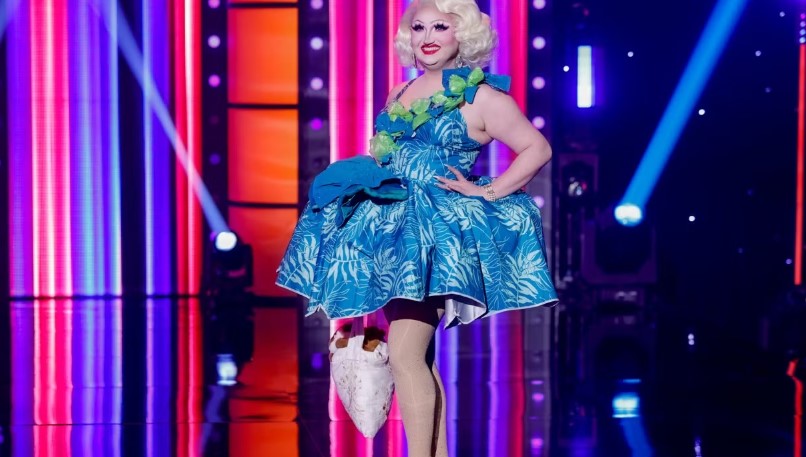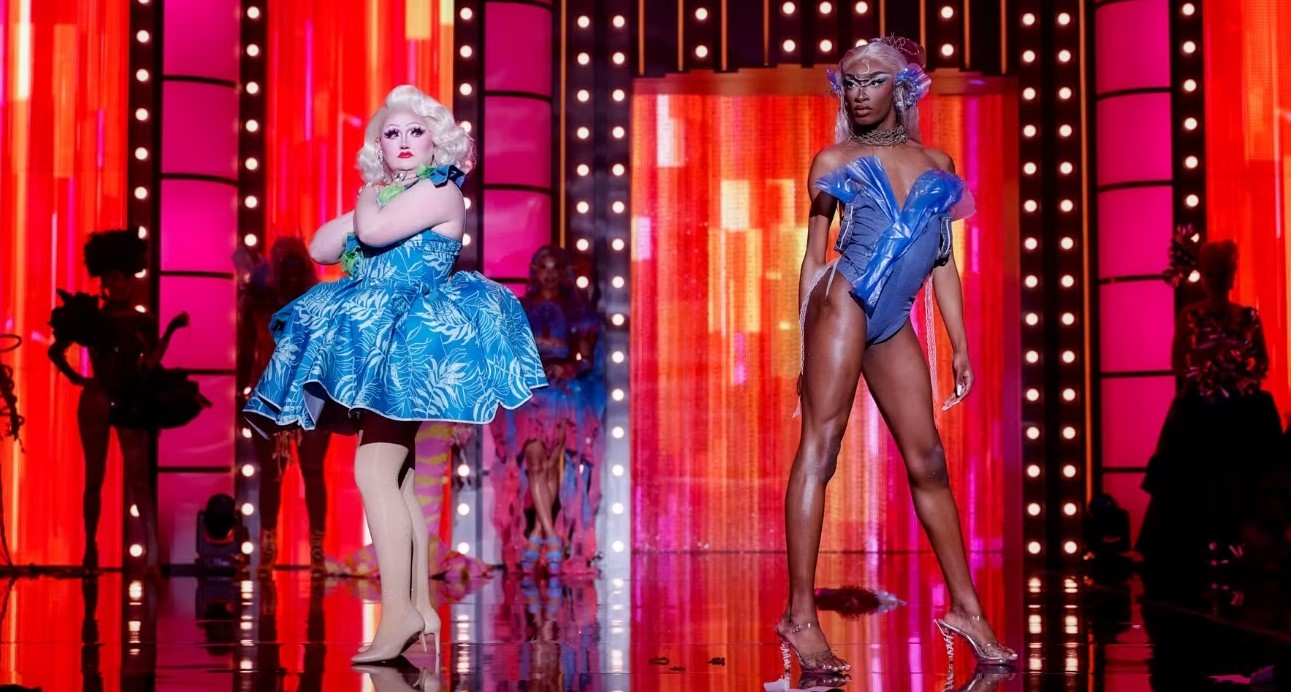Part of the allure of the art of drag is the DIY aspect of pulling a character together on your own. At least, that’s what it used to be all about. In the early days of the art form, many drag artists did it all by themselves. They’d learn to paint and make their own costumes through generational teaching and figuring it out in a trial and error process. As RuPaul’s Drag Race continues to dominate the world, the common trope that bogs down every plot line during every design challenge is a queen’s inability or lack of sewing knowledge. Or that their fashion sense is rooted in drag when the judges are looking for couture better suited to Project Runway.
Gone are the days of queens knowing how to make a leotard or slip dress for a bar gig. It’s simply not enough. It’s not what the audience seems to be wanting for, therefor the judges are grading with that in mind. Drag Race’s expectations for something beyond drag disparage the root of where the art form began. When queens leave the show and forge their own paths, audiences expect great looks, but most importantly, they must be strong performers. Hence, the overwhelming amount of performance-based challenges. With Drag Race moving more in the direction of performance as the main trait needed to excel in the real world post-show, it might be time to shift focus and put design and construction in its own lane.
Fashion and Drag Are Different Yet the Same
At this point in time, at least one queen per season will be read to filth for not knowing how to sew. Why do they come on the show without this trait? It’s part of the training required, just like learning how to start a fire is essential should one play Survivor. Yet, when a queen does know how to sew and is able to construct a garment in their own classic silhouette, it’s simply not sufficient.
As per this week’s episode, the judges did not feel that Hormona Lisa’s silhouettes were strong enough, calling them “safe.” The problem was they were similar to what she’s presented in the past. But her pageant style of drag is her identity. Her looks were not bad. They were just not what the judges wanted. So what happened to Hormona? She was put in the bottom and was eliminated in the lip sync. Was it fair? Absolutely not. In any other season of the show, Hormona would not have even been up for critiques. The problem for Hormona was not her concepts and throughline, which new rotating judge Law Roach praised. It was because it did not transcend the show. But it was drag, so why penalize her?

And then, Lana Ja’Rae gives fashion. As a self-proclaimed fashion queen of the season, she’s put herself in a pickle by causing an expectation she was unable to exceed. Her runways were not perceived to be pushed far enough. Compare and contrast her design to what Jorgeous presented during Season 14, and you’d be left scratching your head. Like Hormona, she, too, found herself having to Lip Sync for her life. Unlike for Hormona, it was for completely different reasons. Throughout the history of the program, the rules for design challenges have truly wavered season by season. Depending on whom the queen is and how the season’s storyline is going, the criteria seem to shift and change. That’s why Hormona and Lana’s contradicting feedback earned the same result.
Can a Design-Centric ‘Drag Race’ Spin-Off Be the Solution?
If Drag Race wants drag queens who deliver fashion week haute couture, perhaps they need a separate spin-off focused on those high-fashion looks. Give those queens who have gone down in history as design fashion icons the chance to shine in a format that celebrates fashion. We’ve been trained to understand that a leotard with “stuff” glued onto it is not sufficient for Drag Race. Thanks, Michelle Visage. But look at an average night out at a bar in a big city. The drag queen performing is probably wearing one. Why is it good enough for the real world and not Drag Race? Time to separate the worlds!
With extraordinary Drag Race alumni who have dominated in these challenges, like Nymphia Wind, Utica, and Q, perhaps those extraordinary drag artists need a show that focuses on drag garment creation rather than knocking out satisfactory queens who do not meet the high fashion criteria. Drag Race already has roots in line with Project Runway. Give the fans more content with a slightly directed focus. It also helps those non-performers who succeed in fashion the chance to shine.
And, here’s one more idea for ya World of Wonder! The show has had some extraordinary fashion designers providing runway looks for the queens’ packages. Give them a chance to compete and shine alongside their clients. Rarely do the queens get the chance to shout out the stars behind the garments like Florence D’Lee, Pierretta Viktori, Casey Caldwell, Daniel Mindiola, Jeffrey Kelly, Diego Montoya, and more. The list goes on. Maybe they don’t want to be reality stars themselves, but many of the most iconic looks in Drag Race history have been at the hands of brilliant collaborators. Drag Race, it’s time for change.
